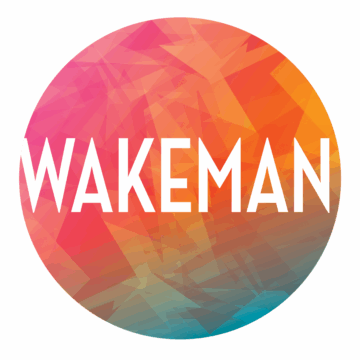
Wakeman
2025 Festival
For More Information Contact
Seth Glewen, sglewen@gersh.com, 212-634-8124
Number of Acts: 2
Number of Principals (Trans / GNC): 1
Preferred Ensemble Size: 11
Total Cast Size: 12
Orchestra Breakdown:
Drums, Bass, Acoustic Guitar, Electric Guitar, Piano/Organ, plus Auxilary: Banjo, Fiddle, Harmonica, Viola, or Cello.
Casting Notes:
The principle character is a women presenting as a man. Hence the pronouns in the script are both she/her AND he/him. However, the character can also be referred to as they/them. In casting the principle, the actor can identify as either a woman or trans, with trans, gender queer, or gender curious preferred. This show is focused on the historical Union soldier Wakeman and their journey to self acceptance. The Civil War, and the institution of slavery that ignited it, touched all parts of American life and its legacy continues to shape our present. However, the war in this iteration of the story serves as a container for Wakeman
Genre & Style:
Americana folk-rock
Synopsis
Wakeman is a folk-rock Americana musical inspired by the incredible true story of Union soldier Sarah Rosetta Wakeman (alias Lyons Wakeman). With powerful lyrics, rich harmonies, and unforgettable melodies, this deeply human story and stirring journey of self-discovery will captivate theater and music lovers alike.
Development History
Wakeman (fka Rosetta Project) was recently a selection in Village Theatre’s Festival of New Musicals, and was developed as part of the Circle in the Square Theatre School’s Emerging Writers Residency. Other development took place at Bridgetown Conservatory in Portland, Oregon, Tower Theatre Foundation in Bend, Oregon, and at Lewis & Clark and Reed Colleges with Dr. Jenna Tamimi. Wakeman was inspired by an idea conceived with Jasper Grant
Fest Fast Facts
- This musical is inspired by and features the letters of Sarah Rosetta Wakeman. Wakeman wrote 33 letters home during their time in the Union Army. Though the very first draft of the book did not contain these letters, it became important to me to give voice to Wakeman’s actual words. In order to analyze and best utilize the letters (sentences remain 99% verbatim in the script!!) I placed their full content into a spreadsheet of roughly 1200 cells, organized by time and subject matter. Each sentence of every letter was divided into the categories of Family, Self, or Money, along with the date, location, to whom specifically the letter was addressed and how it was signed. In addition, I mapped the letters against chronologically corresponding information about Wakeman’s regiment as well as major events in the Civil War and details of Wakeman’s surroundings. In other words-I super geeked out on these letters and in the process became an unconventional Civil War era buff …I may not be familiar with any battles beyond those which Wakeman participated in, but I do know the density (and many names) of brothels in Capital Hill during Wakeman’s time stationed there. The massive amount of research led to all named characters being historically documented people or a composite of historical individuals. All referenced documents and newspaper articles are historical as well, because-super geek.
- More unconventional buff stuff: It is estimated that more than 400 women presented themselves as men and fought in the Civil War. I’ll just leave that there-so no spoilers.
- The heart of this show is Wakeman and their journey to self-realization. The Civil War, and the institution of slavery that ignited it, touched all parts of American life and its legacy continues to shape our present. The war in this iteration of the story serves as a container for Wakeman’s journey and provides context only so much as it did for the actual person. In this reading, you will experience a diverse cast, with actors whose race and gender may not necessarily be the same as the characters or historical persons they portray, while also remaining sensitive, intentional and hyper vigilant in how race and gender do intersect with the script, time, and place. You may hear me refer to Wakeman with the pronouns they/she, the stage directions use she/her, but Wakeman’s gender identity is open to the interpretation of the director, actor, and you, the audience. Because we cannot know for certain how the historic Wakeman identified, I ask you to embrace multiplicity in an effort to honor Wakeman’s experience.
- Lastly, I got this job because I didn’t have Brandi Carlile’s phone number. I’ve been a touring singer/songwriter for years, but alas, do not have her on speed dial-when I relayed this to my friend Jasper Grant, he said, “Well, you’re our second choice, give it a shot.”-I’m paraphrasing…I think. Brandi may not have written the score, but her music, as well as many other Americana groups, surely inspired it. My initial aim was to write music that could be enjoyed outside the musical theatre context. It turns out I have too big a love for big belty dramatic endings and mega-harmony to fully succeed, but I did release one of the songs from the show, “Goodnight Sun, Hello Moon” on my folk group’s eponymous album Siren Songs. Regardless of how much I succeeded in creating “radio” friendly music, I believe the true goal is to offer as many people as possible that crucial point of connection, to pull in a broad audience, and maybe, even change a few hearts in the process.
- I am looking for development opportunities with individuals and theaters that feel as passionate, inspired and moved by this story as I am.

